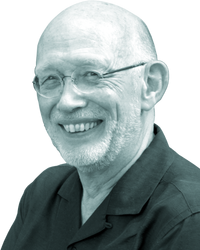
Over het archief
In 2012 verloren we Jean Jacques Peters, voormalig ingenieur van het Waterbouwkundig Laboratorium (1964 tot 1979) en internationaal expert in sedimenttransport, rivierhydraulica en -morfologie. Als eerbetoon aan hem hebben we potamology (http://www.potamology.com/) gecreëerd, een virtueel gedenkarchief dat als doel heeft om zijn manier van denken en morfologische aanpak van rivierproblemen in de wereld in stand te houden en te verspreiden.
Het merendeel van z’n werk hebben we toegankelijk gemaakt via onderstaande zoekinterface.
| [ meld een fout in dit record ] | mandje (0): toevoegen | toon |
 |
| High resolution topo-bathymetric and flow measurements and 2D-hydrodynamic numerical modelling to evaluate the effects of the deepening of the navigation channel in the Western Scheldt Plancke, Y.; Schrijver, M.; Vos, G. (2012). High resolution topo-bathymetric and flow measurements and 2D-hydrodynamic numerical modelling to evaluate the effects of the deepening of the navigation channel in the Western Scheldt, in: Hydraulic Measurements and Experimental Methods 2012 Conference (HMEM 2012), Snowbird, Utah, August 12-15, 2012. pp. [1-7]
In: (2012). Hydraulic Measurements and Experimental Methods 2012 Conference (HMEM 2012), Snowbird, Utah, August 12-15, 2012. American Society of Civil Engineers (ASCE): [s.l.].
|
| Beschikbaar in | Auteurs |
| |
| Documenttype: Congresbijdrage | |
| Trefwoorden |
Measurement > Flow measurement Navigation channels Numerical models Physics > Mechanics > Fluid mechanics > Hydrodynamics Surveys > Hydrographic surveys > Bathymetric surveys ANE, Nederland, Westerschelde [Marine Regions] |
| Author keywords |
|
| Auteurs | Top | |
|
| Abstract |
To evaluate the success of this new disposal strategy an extensive monitoring programme was set up and several criteria were defined. Frequent (2-weekly, monthly) topo-bathymetric surveys using multibeam echo sounding are performed in combination with seasonal sedimentation-erosion measurements using both RTK (intertidal) and singlebeam (subtidal). Also flow velocities on 10 transects, each consisting of 4 measurements points, in the shallow subtidal and the intertidal zone near the disposal locations are monitored. In the shallow subtidal area one RDI ADCP (1200 kHz) is used as measurement device, in the intertidal zone Nortek AquaDopp (2 MHz) devices are used. All devices look upward, allowing maximal vertical resolution when flooded during the tidal cycle. The RDI ADCP is mounted on a frame; the Nortek AquaDopps are dug in the sandbar. Before the start of the deepening, the reference situation was monitored for all 40 locations, measuring continuously over 2 spring-neap tidal cycles. Since the start of the works, new measuring campaigns at all locations have been executed to evaluate the effect of the disposal activities. Preliminary results show different effects near different sandbars, from almost no effect to a significant reduction or increment of current velocities. During the next 6 years this monitoring will continue, allowing the evaluation of the new disposal strategy on the longer term. Parallel with the monitoring, a validated 2D-numerical hydrodynamic model was used to evaluate the effects of the disposal of sediments. Every three months a simulation is performed using the most recent topo-bathymetry. This allows an evaluation of the changes in flow velocities and flow patterns near the disposal areas. |
| Top | Auteurs |

